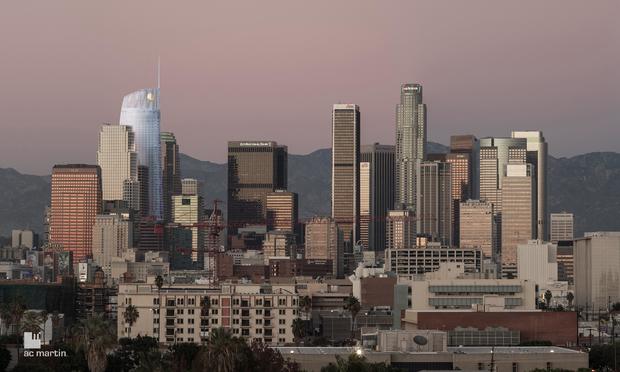Why fewer skyscrapers are being built in the U.S.
North America used to be the boss when it came to constructing super-tall buildings, but now it's lost that bragging right. However, the quest to impress in a financially wise way is still inspiring big city skylines, like in Los Angeles, CBS News' David Begnaud reports.
From the air, Los Angeles' newest skyscraper looks juvenile compared its peers. But when completed, the Wilshire Grand will be 2.1 million square feet, soar 1,100 feet from ground to the top of the spire and be 73 stories tall with a sky deck that has a panoramic view.
"This is not a trendy building. It's not a fashion statement that's gone in a few years," said Chris Martin, chief architect and development manager. "It's something that has to last for a very long time."
"We call it a next-generation office," said Martin. "It's also a next-generation hotel, but we're trying to design buildings that work for the tenant of today, not the tenant of yesterday."
The next generation is mixed-use occupancy. Whereas some skyscrapers used to be all office space, they're now hotel, retail and residential. Mixed-use has become the money-back guarantee for ensuring that tall buildings stack up, financially.
It used to be the sky was the limit when it came to building skyscrapers in North America. Twenty-five years ago, 80 percent of the world's tallest buildings were on this continent. Now, that's plummeted to just 20 percent. You might say the high-rise craze has relocated.
Of all the tall buildings completed in 2014, North America had only four in the top 20. One World Trade Center in New York City topped the list. The majority were in the Eastern Hemisphere.
"If you predicted the world's tallest building 30 years ago," said Antony Wood, executive director of the Council on Tall Buildings and Urban Habitat, "you'd have said three things with certainty: You'd have said number one, it'll be in North America; number two, it will be an office building; and number three, it'll be built out of steel. Now the exact opposite is true. It'll probably be in Asia or the Middle East. It'll be residential or mixed-use, and it'll probably be concrete construction."
Wood said that the reason the tall-building boom has shifted to other areas is partly due to the changes in world economics and demographics. Countries like China have a greater demand to provide for the influx of workers relocating from rural areas. And then there are the bragging rights.
"It's not the case that America is no longer building tall buildings," Wood said. "It's just that the agenda for that quest for the title of the world's tallest has moved on to cities and countries who believe that that's what they need to put their city on the map ... Cities are using skyscrapers to brand themselves as a developed city in the same way that corporate companies in America used skyscrapers to brand their corporation 30, 40, 50 years ago."
As for the Wilshire Grand, the top of the building, beneath the spire, will display the InterContinental Hotel's logo. There will be hundreds of thousands of LED lights around it, prominently decorating the L.A. skyline.
But don't be fooled, promotion isn't everything. Making money is, which is why there will be 900 luxury hotel rooms, along with offices, restaurants and retail shops. It will cost roughly $1.1 billion to build, which is quite the risk in L.A.
"I wanted to see us build a building that really made financial sense, that hit the market demand, that hit the expectations of the owner," Martin said. "That's a gusty thing to make this kind of investment in Los Angeles, and I want them to finish that and say this was really successful."
